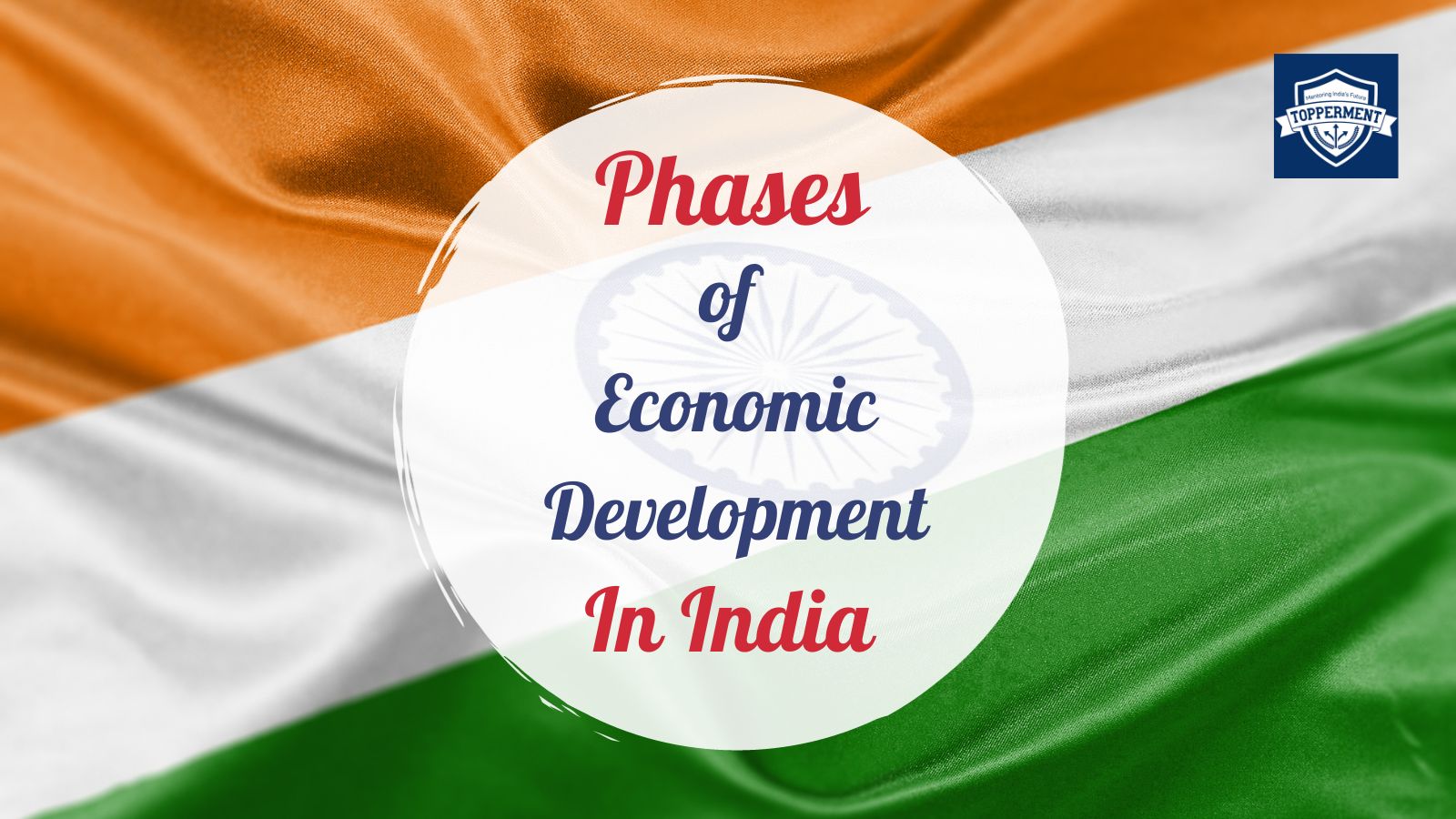
Phases Of Economic Development In India | UPSC Economy
India, a diverse nation, has witnessed significant changes in the economic development over the years. From being primarily agrarian to become one of the world’s fastest-growing economies, India’s journey of economic development can be divided into distinct phases.
Phase 1: Pre Independence Era(Before 1947):
- The Indian economy was predominantly agrarian, with agricultural contributing a major share of the GDP.
- India was under British colonial rule, and the economy was structured to serve British interests.
- The British imposed heavy taxes and trade restrictions resulting in economic exploitation and the drain of wealth from India.
Phase 2: Planning Era(1951-1991):
- After independence, India adopted a planned economic development model with the establishment of the Planning Commission
- The focus was on industrialization through the establishment of public sector enterprises in key industries such as steel, coal, and power
- India adopted a strategy of import substitution to reduce reliance on foreign goods and promote domestic industries
- The economy was guided by a series of Five year plans, an emphasis on infrastructure development, agriculture, and poverty eradication.
Phase 3: Liberalization(1991-Present)
- In the year 1991, India initiated economic reforms to liberalize and open up its economy
- The Liberalization, Privatization, and Globalization policy aimed to attract foreign investments, remove trade barriers, and encourage private sector participation
- Key reforms included fiscal discipline, financial sector liberalization, and trade liberalization
- The IT sector witnessed significant growth contributing to India’s emergence as a global IT services hub
- The rise of the middle class led to increased consumer spending, driving demands for goods and service
Phase 4: Current priorities
- India’s main focus is on achieving inclusive growth by reducing poverty, inequality, and regional disparities
- Enhancing the skill set of the workforce to meet the demands of a rapidly changing global economy
- Investing in infrastructure to support economic activities and improve connectivity across the country.
- Harnessing digital technologies to drive innovation, entrepreneurship, and e-governance initiatives
India’s economic development has seen remarkable transformation across different phase. As India moves forward, it must address various challenges like poverty, infrastructure gaps, and environmental sustainability to ensure sustained and inclusive economic development
Also Read
Operation Polo: The Military Annexation of Hyderabad by India | TM Special
Babur’s March To Power: Birth Of The Mughal Empire In India | UPSC History
Sir M Visvesvaraya: The Engineer-Statesman Who Made Modern India
Tag:Economics In, Economy, IAS, IFS, Independence, India, IPS, IRS, UPSC



